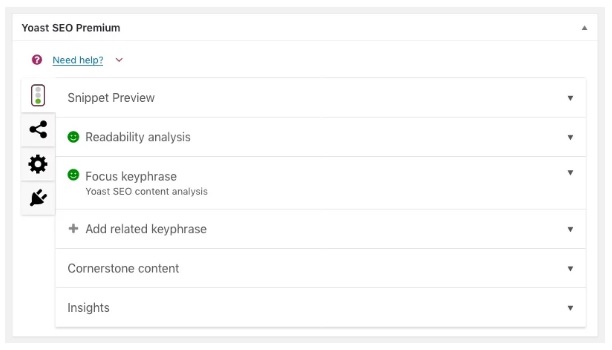They say that content is king when it comes to website SEO. The problem is that nobody reads the content. You could spend weeks crafting captivating articles about subjects relevant to your company with perfectly planned keywords and fewer than half of your readers would make it past the first few sentences. So, how do you keep a visitor’s attention long enough to make a conversion?
The quality of your content may not be the problem. What many businesses struggle with is website readability. Your visitors want to find the information they need quickly and conveniently without scrolling around. How do you do that?
In this article, we’ll explore the subject of readability for websites and provide you with some simple tips to improve your site’s readability to boost your conversions.
Short Attention Spans are the Problem
It’s nothing new that the human attention span is in a steady state of decline. With technological developments, a world’s worth of knowledge is readily available at the click of a button. The ability to stream video and audio means that you can switch from one thing to another as often as you like.
What does this mean for online businesses and their websites?
It means you have a limited amount of time to capture your visitor’s attention and the task of keeping it long enough to make a conversion is only getting harder. Keyword optimization is one of the most effective ways to drive visitors to your website and to make sure that a larger percentage of those visitors are among your target audience. But what happens when they get there?
Why Does Readability Matter?
According to past research gathered by Nielsen Norman Group, less than 80% of users scan any new webpage they visit and only 16% read the page word for word. More recently, data reveals that users read an average of 28% of a webpage’s content before clicking away.
Nielsen Norman Group suggests that there are three key barriers to writing effective copy for a website:
- Legibility – The clarity of visual design elements and typography
- Readability – The complexity of the words used as well as sentence structure
- Comprehension – The ease with which the reader can understand the text
As you can see, readability is only one piece of the puzzle but it is an important one.
What you need to realize is that readability in the context of a webpage is slightly different than the conventional definition of the term. A more standard definition of the term is “the ease with which a reader can understand a written text.” When talking about website readability, things like font size, text color, subheadings, and sentence length come into play.
Readability is more than just a concept – it is a measurable quality. Readability analyzers like Yoast SEO scan the content of a webpage and turn readability into an equation, taking into account factors like the length of words and the number of words in a sentence. These analyzers are by no means 100% accurate, but they are a valuable tool you can use to make your content easier for users to read and comprehend.
Readability is important in every industry but in the world of digital marketing, it is linked to SEO, website usability, and conversion rates. All of these things work together to turn visitors into paying customers. Read on to learn how to improve your website’s readability.

Tips for Improving Website Readability
The primary goal of a digital marketer is to make an impact. With a world of information available at our fingertips, users can quickly and easily find an alternative option if the first website they visit doesn’t capture their attention.
Not only does your website need to look good, but it needs to look simple to comprehend – a wall of text is overwhelming for a reader but the same text is broken up into manageable chunks with bolded headings and bulleted lists are much more manageable. The longer you can keep the reader’s attention, the better your site will perform and your conversion rates will show it.
Before getting into the details of how to improve readability, take a moment to review some of the most common readability factors:
- Speed of perception
- Perceptibility at a distance
- Perceptibility in peripheral vision
- Visibility
- Reflex blink technique
- Rate of work (or reading speed)
- Eye movements
- Fatigue in reading
To simplify these concepts, the idea is to limit the degree to which the reader must move or use his eyes. Overly long sentences and poor use of space on the page can lead to reader fatigue which will lead to poor site performance and lower conversion rates.
Here are some simple tips for improving readability on your website:
- Make your point as quickly as possible. When a new reader gets to your website, they might do a quick scan to estimate how much time and effort it would take to extract the information they want. One strategy you can try is the APP method – agree, problem, preview. Start with a statement the reader will agree with, go on to state the problem and promise to solve it (thus proving to the reader the value of reading the post), then show a preview of that solution.
- Use a readability analyzer to see where to start. Throw a couple of your posts through a readability analyzer and take a look at the results – if you spot any common themes, it gives you an idea of what you need to focus on when making edits.
- Keep it simple. The average American reads at a 7th or 8th-grade level – this means that they understand words you would expect an 11-to-13-year-old to understand. You don’t necessarily need to dumb everything down to that level, but you do need to make sure that your language is understandable for your target audience.
- Try a reading comprehension test. If you’re having trouble adjusting your language to a level more comprehensible to your readers, you might try running a comprehension test like the Cloze Test instead of a readability test. This test asks readers to fill in blanks in a block of tests – if they get 60% or more right, it is an indication of comprehensible content.
- Don’t forget about legibility. The quality or comprehensibility of your content doesn’t matter if your readers can’t physically read it. Choosing a text color that stands out against the background is just as important as choosing the right font size and typeface. You should also think about line length and height to limit the degree to which the user has to move his eyes.
- When in doubt, shorten it. Readability analyzers focus on simple words and short sentences, so that’s what your content should be like. Aim for fewer than 20 words per sentence and try using shorter synonyms for longer or less common words (like ‘also’ instead of ‘furthermore’). Keep your paragraphs short as well with subheadings and images to break up walls of text.
- Make your content stick with the reader. The more easily your visitors are able to read and comprehend your copy, the more the content itself will stick with them. You can also implement content strategies to surprise the reader, include stats and figures, and try to inject emotion the reader will identify with.
Use images to direct attention. The perfect image can inject emotion into your copy and break up big blocks of text, but it can also direct attention back to your copy when used effectively. For example, if you’re using a picture of a person, an image where the person’s gaze is in the direction of the copy on the page, it will naturally lead your reader’s eye to the copy. When in doubt, the best thing you can do to make your content more readable is to simplify. Put yourself in the mind of an 8th grader and read your content aloud, paying attention to the words you use and the overall meaning. Ask yourself whether the content is objectively comprehensible or whether the reader needs background knowledge to understand. Seeing your own content through the eyes of someone who doesn’t have your knowledge will help you make changes to improve readability.
Readability is just one piece of the puzzle for building a better website but when all of the pieces come together, it adds up to higher conversions. Take what you’ve learned here to make adjustments to your webpage copy then see what other changes you can make to improve the user experience as a whole.
